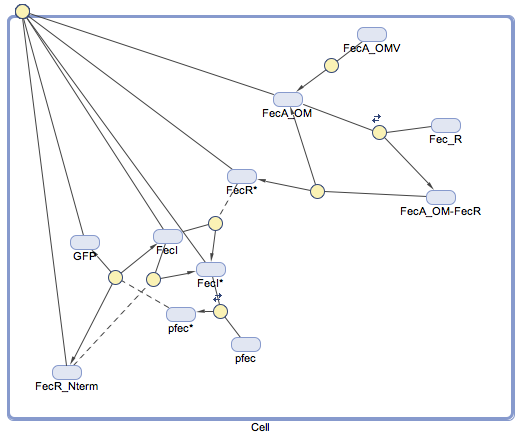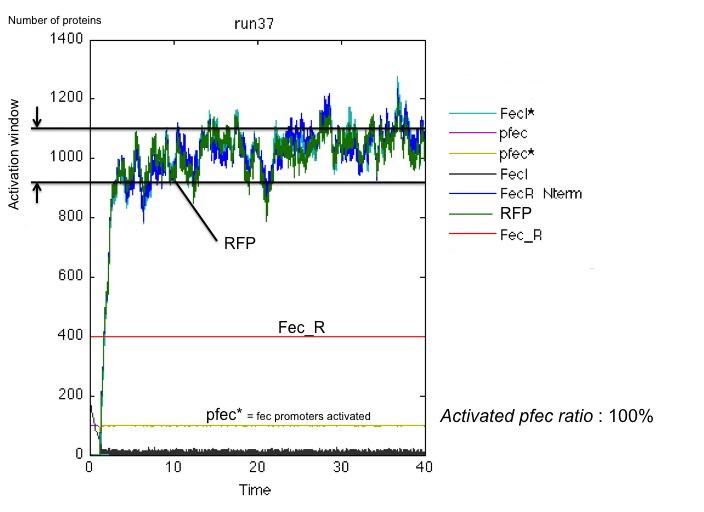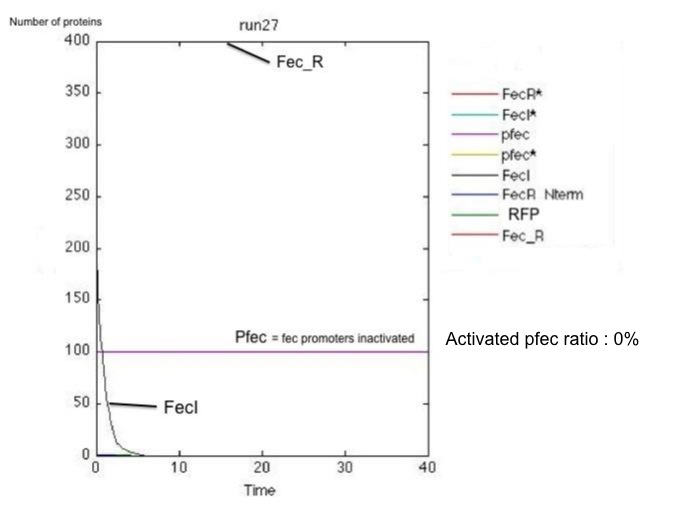Team:Paris/Transduction modeling Deterministic and Stochastic Simulations
From 2009.igem.org
iGEM > Paris > Reception > Modeling
Deterministic and Stochastic Simulations
To study our model, we decided to run two type of simulations.
First of all, we have started with deterministic simulation in order to see whether our description of the chemical cascade reflected our understanding and expected behaviour of the reception system.
Then, to check whether our system was sensitive to molecular noise, we decided to run exact stochastic simulations based on the Gillespie method.
The whole model was built on the Simbiology toolbox of Matlab ; chemical equations as presented here were written and a the resulting diagram of interaction between species was ploted :
Simulations were performed either in the case of complexation between FecA and FecR or with no complexation between the two species. In each case, different calues for parameter kf_2 were chosen.
Deterministic Model
We used classical algorithms to solve the system of differential equations and get deterministic simulations ; in each case, according to Cauchy Lipschitz, there exist AN UNIQUE solution for a given set of initial conditions. The results of the deterministic simulation are all gathered here :
Stochastic Simulations
Several runs of stochastic simulations were run for the different values of k and the different initial amounts of FecA. We used a Gillespie algorithm to compute the amounts of molecules at each step ; the simulations were run with Matlab Simbiology toolbox.
Below, two graphes issued from our simuations : in the first one, the signal is transducted correctly and the receptor is activated while in the second one, the initial amount of FecA is unable to activate the positive retro action loop.
 "
"



